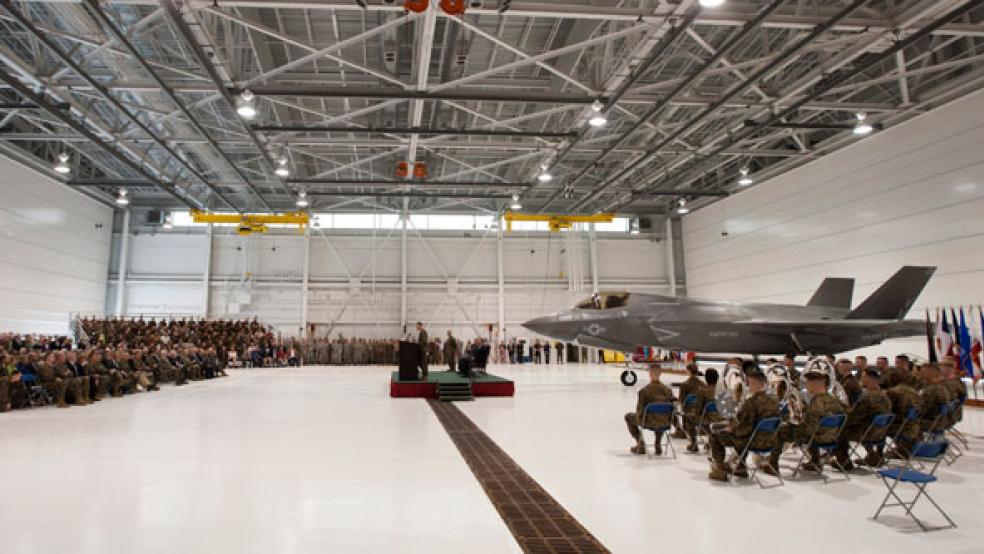The House Armed Services Committee on Wednesday provided major defense contractors with another venue to warn that the sequestration budget cuts will cost jobs. An Aerospace Industries Association-commissioned study released Tuesday claimed more than 1 million defense-related jobs would be lost in the first year alone with states like California, Virginia and Texas absorbing the biggest blows.
But a Fiscal Times survey of Securities and Exchange Commission filings by the largest defense contractors reveals that the government’s massive investment in new weapons systems over the past decade led to only small increases in industry employment. The data suggest the employment effects of reduced budgets may not be as large as predicted by the AIA study.
Moreover, while spending on major weapons systems only recently began its post-Iraq and Afghanistan decline, employment at the largest firms in the industry began falling in 2009 or before. That is at least three years before the current round of budget cuts dictated by the Budget Control Act and long before concern about the impact of sequestration.
Analysts say it takes years for defense budget cuts to translate into reduced employment, largely because of the way the federal budget works. Reduced authorizations precede reduced appropriations by several years, especially in defense procurement. The Pentagon planning process also gives major contractors long lead-times for adjusting to lower budgets or cancelled weapons programs.
“The pure defense (companies) like Raytheon and Lockheed saw the downturn coming and pared their workforces,” said Loren Thompson, a defense analyst at the Lexington Institute who consults with nearly every major defense contractor. “The BCA cuts in budget authority will take years to translate into lower spending. The impact will dribble out over four or five years.”
Meanwhile, leading companies in the industry are doing little to diversify into new industries that could provide alternative employment options for their skilled workers. Instead, they have launched large-scale share buyback campaigns to maintain per-share profitability. They are also acquiring smaller firms and spinning off unprofitable divisions as the industry prepares for the coming era of budget austerity.
“That’s what you do when you have a lot of cash,” said Richard Aboulafia, a defense industry analyst at the Teal Group. “You buy shares and make acquisitions.”
Northrop Grumman, headquartered near the Pentagon in Falls Church, Va., is typical. The company, which makes everything from the B-2 stealth bomber to cyber security software, employed 117,300 workers at the end of 2002, the first year in what would become a decade-long defense spending binge that doubled military spending to more than $700 billion in 2011.
At the end of 2010, the company employed an almost identical 117,100 workers after peaking at 123,600 in 2008. Yet over the course of the decade, Northrop sales soared from $17.2 billion to $28.1 billion.
Last year, Northrop spun off its shipbuilding division to Huntington Ingalls Industries. Though sales for the year declined slightly, the company declared its highest profits ever -- $2.1 billion or $7.65 a share. The company has 24 percent fewer shares than it had a decade ago.
Lockheed-Martin, whose major contracts include the F-35 Joint Strike Fighter and Patriot missile system, has already taken a huge hit from cancellation of the F-22 program. Sales over the last decade soared from $26.6 billion in 2002 to $42.7 billion in 2008 at the peak – a 60 percent jump. They’ve since fallen 13.5 percent to $36.9 billion.
Employment at the firm, which depends on the Pentagon and other government agencies for 82 percent of its sales, grew only 21,000 jobs by its peak, a 17 percent increase to 146,000 jobs. At the end of last year, the aerospace giant employed 123,000 workers, 2,000 fewer than it had at the beginning of the decade even though sales are still $10 billion or 38 percent higher.
Massachusetts-based Raytheon, which focuses on advanced electronics for navy radar and missile defense, also saw its military business soar during the huge defense build-up of the 2000s. Sales of $!6.8 billion in 2002 grew to $24.9 billion last year, a 48.2 percent hike. Employment, however, never rose much – from 76,400 to a peak of 80,000 in 2006. And it has since fallen to 71,000 at the end of 2011 even though the company’s defense contracting business, which accounts for nearly all of its sales, has remained fairly stable.
The failure to add many jobs during the defense build-up may have been due in part to greater use of outside contractors. But that wouldn’t explain why employee headcounts at major defense firms have been dropping ahead of the BCA budget cuts and the expected sequestration budget cuts.
Analysts say the industry has been preparing for a downturn in defense spending that they assumed would be similar to what occurred after the end of the Cold War in the early 1990s or the end of the Vietnam War in the second half of the 1970s. Those defense spending cuts reached 30 percent.
The BCA cuts to defense, on the other hand, were less than 10 percent of overall Pentagon spending. The sequestration cuts would add another 13 to 15 percent on top of that, making the total still less than previous build-downs. “The feeling was we were going to a lower plateau before sequestration,” said Aboulafia of the Teal Group. “This would be an unpleasant acceleration.”
The problem with sequestration from defense contractors’ perspective, said Thompson of the Lexington Institute, is the prospect of their implementation through sequestration, not their magnitude. “The companies are more upset about the way the cuts are coming – not the size of the cuts,” he said. “It could be quite chaotic if they are across-the-board.”






